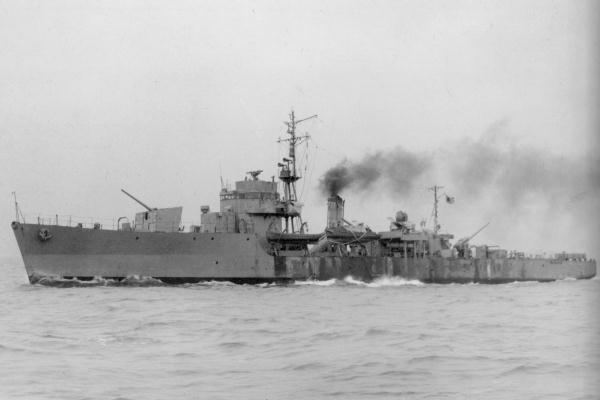Name No.2 class escort ship Cost 5,363,000 JPY | Built 1943–1946 | |
 | ||
Builders Yokosuka Naval ArsenalFujinagata ShipyardsHarima Zōsen CorporationHitachi Zōsen CorporationIshikawajima Heavy IndustriesKawasaki Shipbuilding CorporationMitsubishi Heavy IndustriesTōkyō Ishikawajima Shipyard | ||
The Type D escort ships (丁型海防艦, Tei-gata kaibōkan) were a class of ships in the service of the Imperial Japanese Navy during World War II. The Japanese called them "Type D" coast defence ships, and they were the sixth class of Kaibōkan (Kai = sea, ocean, Bo = defence, Kan = ship), a name used to denote a multi-purpose vessel.
Contents
Background
The Type D, like the Ukuru-class and Mikura-class, were dedicated to the anti-aircraft and anti-submarine role.
On 22 April 1943, the Navy General Staff decided a mass production of escort ships, because of the urgent need to protect the convoys which were under constant attack. The plan was to build a basic escort ship of around 800 tons, with a simple design for easy construction. The first designs, for "Type A" Etorofu class and "Type B" Mikura class, still needed too many man-hours for building, so in June 1943, the Navy General Staff planned for a simplified design. The result was the Ukuru class, and a scaled-down model of the Mikura class, which became the "Type C" and "Type D" escort classes.
Design
Because of Japan's deteriorating war situation, the Type D class was a further simplification of the Ukuru design and were built to the same design as the Type C escort ship. However, due to a shortage of diesel engines to power both groups of vessels, the Type D were powered by turbine engines. This gave a slight increase in speed, from 16.5 to 17.5 knots, but a reduction in range and endurance, 4500 miles at 16 knots instead of 6500 miles. The Type D was the only Kaibokan type to use turbines.
They were smaller by 200 tons than the Ukuru’s and engines that propelled them were also smaller, at 2500 SHP vs 4200 for the Ukurus. Because of the decrease in engine power, the speed fell from 19.5 to 17.5 knots. The number of 4.7" guns went from three to two. The number of depth charges aboard was the same, 120, but the number of depth charge throwers was decreased from 18 to 12 and the depth charge chutes were decreased from two to one.
Due to the simplifications of the design, a significant saving was made in construction time. The Type D escorts required approximately 20,000 man-hours each, compared to the 35,000 man-hours of the Ukurus and the 57,000 man-hours of the Mikuras.
Construction
The design work for the Type D ships started in March 1943, at the same time as for the Ukuru class. They were built concurrently with the Ukuru class and the Type C-class. The Type D were given even numbers while the Type C were given odd numbers. The Type D were constructed using prefabricated sections that enabled them to be built in as little as three to four months. The lead ship, "No.2" (CD-2) was constructed at Yokosuka Naval Arsenal, laid down on 5 October 1943, launched on 30 December 1943, and completed on 28 February 1944. CD-198 was the fastest build, being constructed in only 71 days; she was laid down on 31 December 1944, and completed on 11 March 1945.
Service
Most of the Type D escorts were assigned to the Escort Fleet. However, they were not able to stop the American submarine offensive. One drawback was they did not have an effective fire-control system. They were equipped only with one height rangefinder for the AA guns and were powerless against an air attack. Despite being simple to construct they however proved themselves very durable for their size. Of the 22 instances of torpedoes striking them, they survived 9 times, with the CD-30 being struck and surviving on two separate occasions. Of the seven occasions when they struck mines, only one sank.
During the war 68 ships were finished out of the 200 planned; 25 were sunk during the war.
